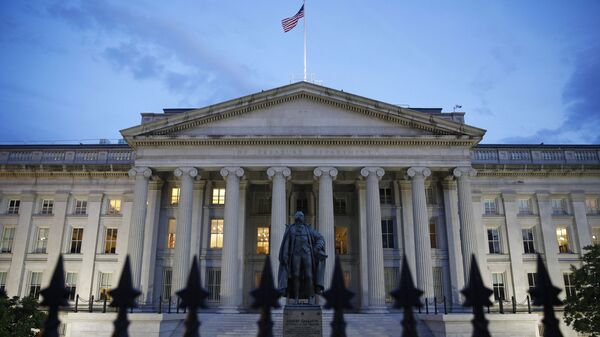The US federal budget deficit has ballooned to a record $864 billion in June 2020, up from $8 billion in June 2019, the Treasury Department announced in a monthly report.
The record topped the previous monthly increase all-time high of $738 billion, reached in April, as the government began ramping up fiscal measures to deal with the coronavirus crisis amid lockdowns, growing unemployment and declining tax revenues.
The spending has pushed the deficit up to $2.7 trillion in the first nine months of the current fiscal period, up from $747 billion at the same time last year.
Estimates vary on just how high the deficit will now climb, with the Congressional Budget Office projecting a $3.7 trillion shortfall, while some economists say a $4 trillion+ deficit, or over 25 percent of GDP, is more likely. Such high levels of deficit spending have not been seen since World War II. However, in that period, Washington was able to escape crushing debt thanks to a post-war boom which included reconstruction and the selling of US industrial and consumer goods to European and Asian nations devastated by the war. The possible sources of a US recovery this time around remain unclear.
Some $511 billion of June’s $738 billion deficit was said to have been tied to the Paycheck Protection Program, a small-business assistance package offering forgivable loans to companies that don’t lay off workers amid the crisis. $116 billion more was eaten up by unemployment benefits. A move to defer tax payments until mid-July also helps to explain the June figure, according to the Treasury.
In total, through a combination of spending and loan guarantees to banks, the US federal government has committed over $6 trillion to curb the impact of the coronavirus crisis and try to restart economic growth. Major spending includes the $2.15 trillion Coronavirus Aid, Relief and Economic Security (CARES) Act, the $3 trillion Health and Economic Recovery Omnibus Emergency Solutions (HEROES) Act.
The crisis has helped push the US national debt past the $26 trillion mark (i.e. 125 percent of GDP), equivalent to nearly $80,000 in debt for every man, woman and child in the United States.
* The Netherlands posted a GDP equivalent to about $902 billion US in 2019, with forecasts projecting an $805 billion GDP in 2020.





